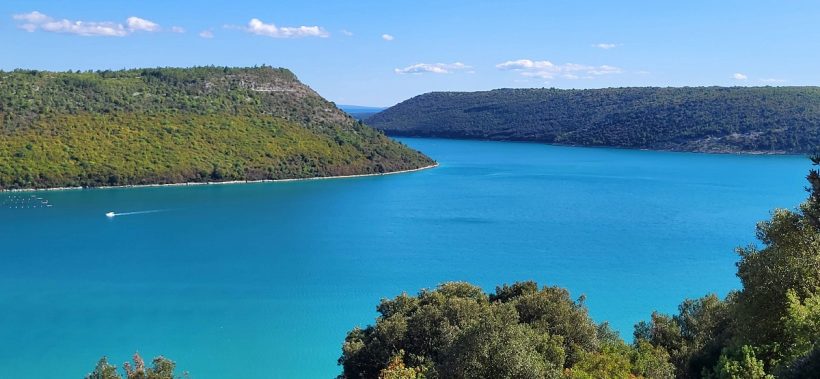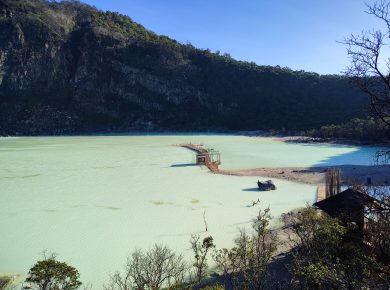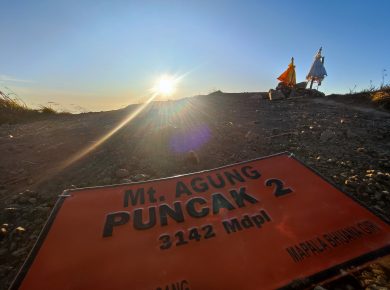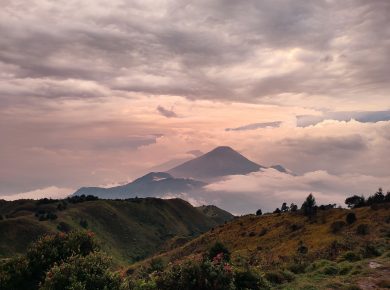Croatia is a country on the west coast of the Balkan Peninsula. Most of Croatia was under the rule of the Austro-Hungarian Empire, so the architecture and culture of this country are very different from those of neighboring Serbia. Despite its small territory, Croatia has a lot to offer: beaches and islands, cities lovingly built by Roman emperors, national parks with forests and caves, delicious food… We give you all the details about what to do in Croatia.
Contents
Walking around the cities
Croatia is a very heterogeneous country. In different parts, you can see the legacy of the Austro-Hungarian Empire, while the coast (Istria and Dalmatia) is the domain of Italian and even Mediterranean culture. For Austro-Hungarian heritage, go boldly to the north of the country. First of all, pay attention to the capital city of Zagreb, whose maiden name is Agram.
Another interesting city is Varaždin. The original Baroque architecture is best preserved there. Majestic palaces and impressive cathedrals—not bad for a city with a population of just over 40 thousand people. Be sure to visit the Varaždin cemetery. It was founded in 1773, and until the beginning of the XX century, it was not so special. But in 1905, the cemetery got a new manager, who decided to make a garden out of the cemetery. This is how it acquired an unusual appearance.
On the shores of the Adriatic Sea is the ancient city of Split. It was the birthplace of the Roman Emperor Diocletian, who was known as a great opponent of Christianity. Diocletian’s palace has been preserved in the city; it is considered the best-preserved palace of the Roman Empire period. By the way, if you love “Game of Thrones” and closely follow the line of Daenerys, the walls of the palace will seem familiar to you. It was in the palace that the scenes in the free city of Meereen were filmed.
Dubrovnik was repeatedly taken over by Italians, Croats, French, and Austrians. Each of the new owners left their mark on the architecture of the city. The old town is located within the fortress walls—you can walk along them, by the way. There you can clearly see the trace of the Italians—the old town was built up in the XVII century. The new town is mostly houses from the XIX—early XX century, the period of Austro-Hungarian domination. Dubrovnik is also where Game of Thrones is filmed—the city depicts the Royal Harbor. In 1991, during the Balkan Wars, about 65% of the historic city center was destroyed, but most of the buildings were soon rebuilt. So much so that it’s hard to tell now that just 25 years ago the city was in ruins.


Explore the beaches
For an unsophisticated tourist, Croatia is, first and foremost, the gentle Adriatic Sea and wonderful beaches. The main tourist regions of Croatia are Dalmatia and Istria. Istria is the largest peninsula in the Adriatic Sea, which is shared by Croatia, Slovenia, and Italy. If you will be here, do not forget to reliably recharge your phone or camera, as the region is famous for its very picturesque coastline, with many beautiful and cozy bays and harbors, rocks, and pine forests.
Istria
Istria is the most forested region of Croatia; about one-third of the peninsula is covered with forests. The main city in the region is Pula. It was founded by the ancient Greeks, but the city reached its heyday under ancient Rome. As evidence, there are a lot of well-preserved ancient Roman monuments. The largest of them is the ancient Roman amphitheater. It was built in the 1st century AD, but it has survived to our times in excellent condition.
Be sure to stop by the city of Hum—it is considered the smallest city in the world. Only 11 people live here! Within the city walls, tourists can walk along two streets. And near Hum is the Glagolitic Alley—the oldest Slavic alphabet. 14 kilometers of Glagolitic letters connect Hum with the neighboring town.
Besides beaches, Istria has a lot of amazing nature. In the forest of Motovun, for example, grow some of the best truffles in the world. The forest itself is now a nature reserve, one of the few untouched floodplain forests in the Mediterranean.
After a hot day, the best way to refresh yourself is to go underground to the caves. One of the largest is Mramornica (Štancija Drušković 20, Brtonigla). Here you will see giant, 13-meter-high stalactites. Another famous cave is Feštinsko Kraljevstvo (Zminj). This cave has many stalactites of bizarre shapes: bat wings, a hat, and the Tower of Babel.
Istria is also home to delicious wine. They say that it is not inferior to Italian wine. And, of course, the sea. It is beautiful here, and many beaches are marked with the highest quality mark—the Blue Flag.


Dalmatia
Dalmatia is another popular resort region in Croatia. Dalmatia was once a colony of the Republic of Venice, so the towns here look as if they were part of Italy. Geographically, the region is divided into three parts: Northern (Zadar), Middle (Split), and Southern (Dubrovnik). Unlike Istria, you won’t find forests here. But in Dalmatia, there are a lot of bays and sandy and pebble beaches—you can perfectly lie on the sand. Or you can go windsurfing and diving.
Almost any city in Dalmatia is responsible for its cultural program. Tourists must visit, of course, the aforementioned Dubrovnik and Trogir. Trogir is a “museum city”. Its entire historical center, with a huge number of palaces, mansions, and winding streets, is included in the UNESCO World Heritage List.
The small village of Radošić near Split, attracts thousands of tourists every year. They are attracted by the Bikijada—legal bullfights. More than 20 bulls take part in this fight to the death. But not only bulls show their prowess; people can also compete. For example, in boulder throwing or arm wrestling. It is not so easy to get there—after all, the show was conceived for its own people. Bikiyada usually takes place at the end of May, so keep an eye on the posters.
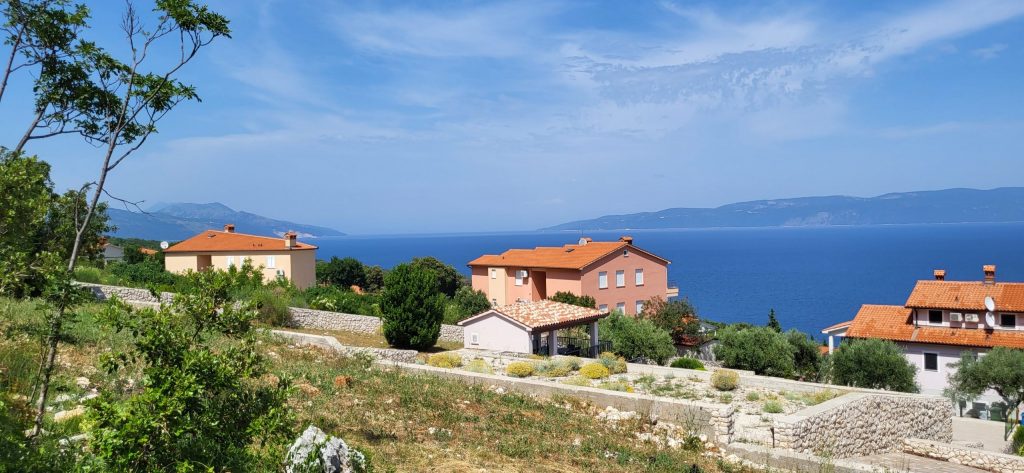

Travel the islands
There are about 1145 islands along the coast of Croatia. True, only 47 of them are inhabited. Most of the islands have long been famous tourist destinations—the prices are very biting and have almost caught up with the Côte d’Azur. But such beauty is absolutely worth its price!
The most beautiful island in Croatia is Hvar. You can get there by ferry from Split, but you will have to spend about an hour on the road. It is the sunniest island in all of Croatia, and it is one of the few places on earth where lavender grows. It’s also an island of olives, grapes, and underground springs. If you want to immerse yourself in Croatian island life, head inland. Tourists have not gotten there (yet).
The most party island in Croatia is Brač. It is located in the neighborhood of Hvar and is famous for its beach near the village of Bol. Its name translates from Croatian as “pain”, but the beauty of the beach and the beautiful sea rather remind you that this place is a paradise on earth. Getting there is also best done from Split by ferry.
The largest island in Croatia is Krk. Unlike most other islands, it is connected to the mainland by a bridge, so you can easily get there by car from the city of Rijeka. It is an ideal place for a summer vacation, with beaches, a soft sea, and a gastronomic attraction: Žlahtina wine. It is produced only from grapes grown on Krk. It is a white dry wine, and its name means “important”.
Mljet Island is wooded and completely unglamorous, with amazing nature. On Mljet Island, there is a national park of the same name with two salt lakes. Their names are quite original: Big Lake and Small Lake. In the center of the Small Lake, you will see the former building of the Benedictine monastery of the XII century, which can be reached by boat.
The island of Vis is considered to be the most mysterious, as it was a military base of Yugoslavia. Why come here? Firstly, to wander through the caves. Secondly, for delicious fish (the locals are good at it!) and wine. And also, there are practically no tourists here. After all, it’s not well-known or easy to get here. The only option is either a water taxi from other islands or, for a more budget-friendly option, a ferry from Split.


Try religious tourism
Interestingly, Croatia is one of the most religious countries in Europe; about 86% of the country considers itself Catholic. The center of religious tourism here is the town of Marija Bistrica near Zagreb. It is remarkable in itself for its pretty Austrian architecture, but that is not why half a million pilgrims come here every year.
The first pilgrimage to Marija Bistrica began in the 17th century when a statue of Mary in Bistrița was found here, which is believed to have miraculous powers. According to legend, a local priest buried the statue in the XVII century, away from Turkish invasions. After he died, no one could find the statue. But chance helped: a mysterious glow appeared over the place where the statue was buried. The sculpture was dug up, and after that, several cases of miraculous healing of the seriously ill were recorded. Especially for the statue, a shrine was erected, but soon it had to be rebuilt because it could not accommodate all those wishing to touch the shrine. And now, all year round, tourists go to Marija Bistrica. In 1998, John Paul II visited the town and canonized the local cardinal, who was sentenced to 15 years for criticizing the Tito regime.
Apart from pilgrimages, it is not difficult to come across religious festivities in Croatia. For example, almost every village has its own patron saint, in whose honor the locals organize a merry festival with a market and live music.


Taste the local cuisine
It has probably become clear by now that Croatia is a diverse country. The cuisine is no exception. It can be divided into two main parts: continental and coastal. Continental cuisine (that is, Zagreb and the Slavonia region) is famous for its “meatiness”: like everywhere else in the Balkans, meat is especially honored in this part of Croatia.
- Be sure to try the traditional pršut (a distant relative of Italian jamon)—dried pork meat, which goes well with a shot of local moonshine.
- Another very meaty dish is kulen. It is a sausage made of minced pork but with paprika and spices.
- Don’t forget to try the turkey with mlinci, a baked dough that resembles pasta. All this is served with unleavened bread.
- The traditional Balkan cutlet pljeskavica is made of a mixture of beef and pork on the grill. The garnish can be cereals—buckwheat, millet, or barley.
- For dessert, take a typical Croatian dish strukli. They resemble dumplings, but as if first boiled and then baked in the oven. They are served directly in the skillet along with cream or sour cream. In coastal Croatia, the cuisine is a little different. People here eat a lot more seafood compared to mainland Croatia. Yes, and several centuries of Italian rule made themselves felt. Therefore, a pizza somewhere near Zadar can be as good as a pizza in Milan.
- Pag cheese is considered one of the main delicacies of the Croatian seashore. It is made only on the island of Pag. It is a hard sheep cheese with a little added butter. Local sheep graze on salty and very fragrant terrain, so their milk has a distinct herbal flavor. It takes at least 5 months to make Paš cheese, and you can taste it only on small private farms.
- Near Split, soparnik is the national dish. It is a thin cake with onions, spinach, and garlic, which are baked between two layers of dough. Once considered the food of the poor, soparnik is now almost the primary specialty of the region.
- Crni rijot, or in Croatian, black risotto, is a tourist classic in Dalmatia. It is a classic risotto, except that the rice is colored with cuttlefish ink.
Croatia is not only rich in food; you can also have a good drink here. The main local drink among alcoholic beverages is slivovitsa. This is homemade moonshine based on (surprise-surprise!) plums. The strength—from 45 to 75 degrees, but because of the pleasant flavor it is almost not felt. This can play a cruel joke on you: you tip over, tip over the glasses—and bang, half a bottle is gone. Apart from slivovitsa, we recommend trying travarica and kruskovac in Croatia. And in the vicinity of Zadar was invented maraschino—a wonderful fruit liqueur.
One of the most famous Croatian wines is Plavac Mali. It is made from grapes that grow under the hot sun of Dalmatia, so it has a rich and tart flavor. Drink a little at a time, or you’ll get intoxicated too quickly. If you prefer white wines, go for malvasia. This wine is a great refresher after a day at the beach.


Photos: Peter Pollak
